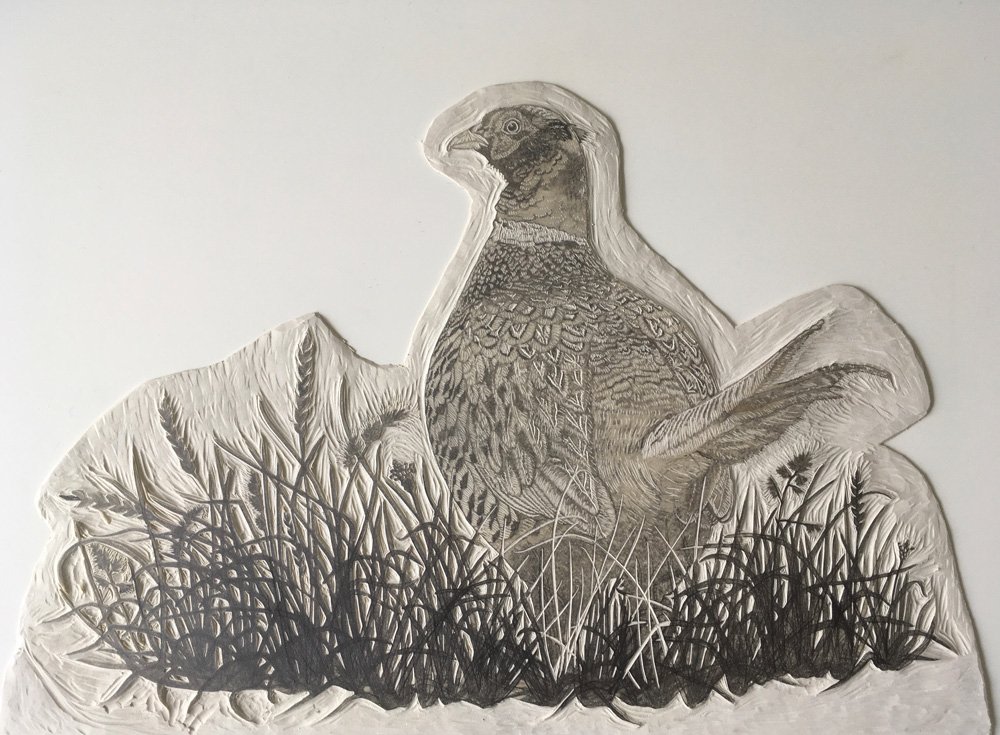‘The Prize’ - Limited Edition Relief Print
Inspiration
When I was very young I found a male Pheasant tail feather. This was duly carried home with much care and became one of the most prized parts of my growing collection of nature finds. Every walk in the countryside seemed to be accompanied by the sound of a cock Pheasant crowing to attract more hens to his harem or let other males know he was there and he meant business. “Chuuuur-kuk!”
Their natural fear of humans means it is rare to get close enough to a Pheasant to admire the cock birds’ iridescent blue-green heads, white neck ring and bright red wattles. These, together with the pale coloured hooked beak, ought to make them look somewhat regal, but I find their ear tufts give them a charmingly comical look.
Ours was one of the pockets of the country where Pheasants have naturalised, though with many “escaping” from shoots over the years it is hard to tell which birds were bred for sport and which by wild parents. All the same, one truly memorable day we found a Pheasant nest in last year’s bracken under a hedge. A shallow bowl, not two inches deep, lined with grass and filled with eleven smooth, pale olive green eggs, still warm; the hen wasn’t far away so we retreated to watch and she returned, checked the eggs were as she left them and settled down to brood.
A few weeks later we saw another hen with twelve stripy chicks still in tow. Amazingly they can fly only two weeks after hatching so these flightless little ones were pretty young, still. The hen was hard to make out against the landscape with her mottled plumage and it was only when the chicks moved that we could see them at all.
Design
I liked the idea of a showing a pheasant in the offseason, the summer grasses just starting to go to seed—a prize for the hens in his harem.
In a previous life I was a graphic designer and this sensibility informs my printmaking. The grasses would need to be very bold and graphic, some positive and some negative where they were placed in front of the pheasant. This also meant all the gaps between the grass—the negative space in the design—would need to be cut away.
I alter the design as I work on the plate, so this drawing is a little different from the finished print at the top of the post.
Once I transfer the drawing to the lino tile, that helps me see things I didn't see before the drawing was reversed. And so the design evolves: as I cut more material away, I re-draw, and reconsider. Here's the design mid-way through cutting.
All the negative space in the grasses has been cut away, no mean feat with the 0.5mm U gouge given to me by the friend who started me on my linocutting journey! Though as this was my second print I had bought a set of cheap linocutting tools to clear the material from the outside of the plate. Doing all that with a teeny gouge really would have taken me forever.
And here's the plate before its very first inking for a test print. I carved more material away, especially on the head but as you can only take material away, it’s good to err on the side of caution.
I took some of the loose grasses away from the bottom of the plate after a taking an artist’s proof.
If you would like to buy one of the hand-pulled prints from this edition of just 30, thank you! Please head over to the gallery.



